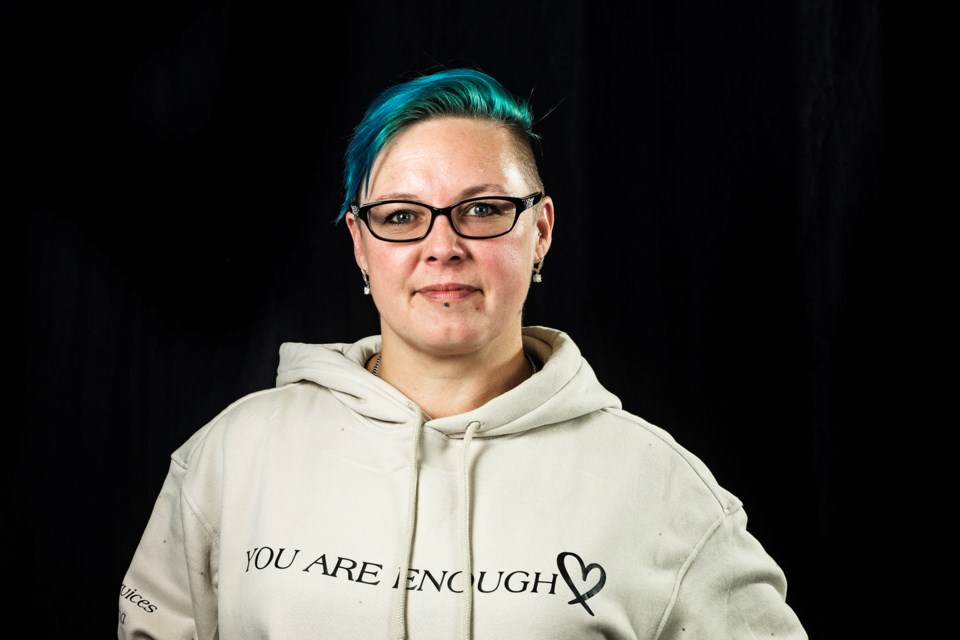WARNING: This article contains details that may disturb some readers.
The rate of suicide among youth is four times higher in northern Ontario when compared to the provincial average, according to newly released data.
The data was collected by Village Media journalist Patrick Cain from the Office of the Registrar General, which records every birth and death in the province. That data was combined with census information to create the following graphs.
To maintain anonymity of those affected, the data on youth suicide is being presented between 2010 and 2022. During that time period, the data shows northern Ontario youth aged 13 to 19 died by suicide at a rate four times higher than the provincial average, as shown in the following graph.
The data is organized by broad regions and large population centres to preserve anonymity.
SooToday asked Jasmine Savoie, executive director of Victim Services of Algoma, about the graph above, which shows a dramatic spike in the death rate by suicide in northern Ontario.
"I think that visual really puts things into perspective on how prominent this issue really is," Savoie said. "It really shows it in your face. You cannot hide it. You cannot deny that this is a problem because it is off the charts, where other regions may not be struggling as bad."
Despite her organization's role in supporting families affected by tragedies of all kinds, Savoie said specific data on the rates of youth suicide isn't well known.
"We would have to go searching for it," she said. "It's not readily available, but I think it should be because I think this is really how we start to identify a lot of the gaps within our city or the northern communities that have limited resources."

Gordon Flett is a professor at York University's Department of Psychology who has researched youth suicide in Canada, the U.S. and around the world. He said many youth who die by suicide feel like their lives don't matter — whether it's at home, at school or within society as a whole.
"Everybody has a role to play," Flett said. "If you matter at home but you don't have any sense of mattering to peers or at school — a key contributing factor as well — then you're going to feel incredibly lonely and isolated in a world of social media where so many people seem so connected with others, even though sometimes it's a total facade."
That sense of not mattering can be amplified, said Flett, when a person who is seeking assistance for thoughts of self harm are unable to find help in a timely manner.
“If you're a youth and you've actually taken the brave step of saying: ‘Hey, I've been having these thoughts, I need help’ and then you can't get treatment or even an assessment in a timely manner, it's like: ‘Well, here's some evidence, again, that I don't matter as much as I should,” Flett said.
Although the data includes northern Ontario population centres like Sault Ste. Marie, Timmins, Thunder Bay and others, it also includes First Nations communities, many of which are known to have elevated rates of suicide.
"If you come from some marginalized background or some marginalized group, then the pain of not mattering might be felt much more acutely because it's so highly correlated with loneliness and very highly correlated with not just a lack of help but a lack of hope," Flett said.
The data shows northern Ontario youth not only experience elevated rates of death by suicide, but also elevated rates of death in general. More than twice as many youth died per 1,000 people between the ages of 13 and 19 in northern Ontario compared to everywhere else in the province.
Sault Ste. Marie Mayor Matthew Shoemaker said the graph does not surprise him.
"It shows again what I've said a number of times on the opioid stats — the further you get away from Queen's Park the more severe the problem becomes, but the less attention it gets," Shoemaker said.
"It's either worse because of the socioeconomic circumstances or it's worse because it's not getting any attention or the funding or the programming that it deserves," he added.
Ministry of Health spokesperson Bill Campbell did not answer specific questions about the difference in funding for youth mental health between southern and northern Ontario, but sent an email addressing programs and services that have been funded in recent years.
"Through our government’s Roadmap to Wellness, our government is taking action to build a modern mental health and addictions support system that is focused on providing people, of all ages, with the right care, in the right place," Campbell said.
He noted the provincial government has increased investments to support children and youth mental health by over 25 per cent and investing an additional $44.6 million each year to deliver new and expanded community-based services.
He said $130 million has been spent on child and youth mental health in northern Ontario since 2019, which includes funding for Youth Wellness Hubs, Child and Adolescent Psychiatry Services program based in Thunder Bay and the Regional Social Emergency Manager program through which 11 northern Tribal Councils and regional organizations support crisis prevention, mitigation, preparedness, response and recovery.
If you or someone you know needs to speak with someone, please call Kids Help Phone at 1-800-668-6868 or 9-8-8 for the Suicide Crisis Helpline.
